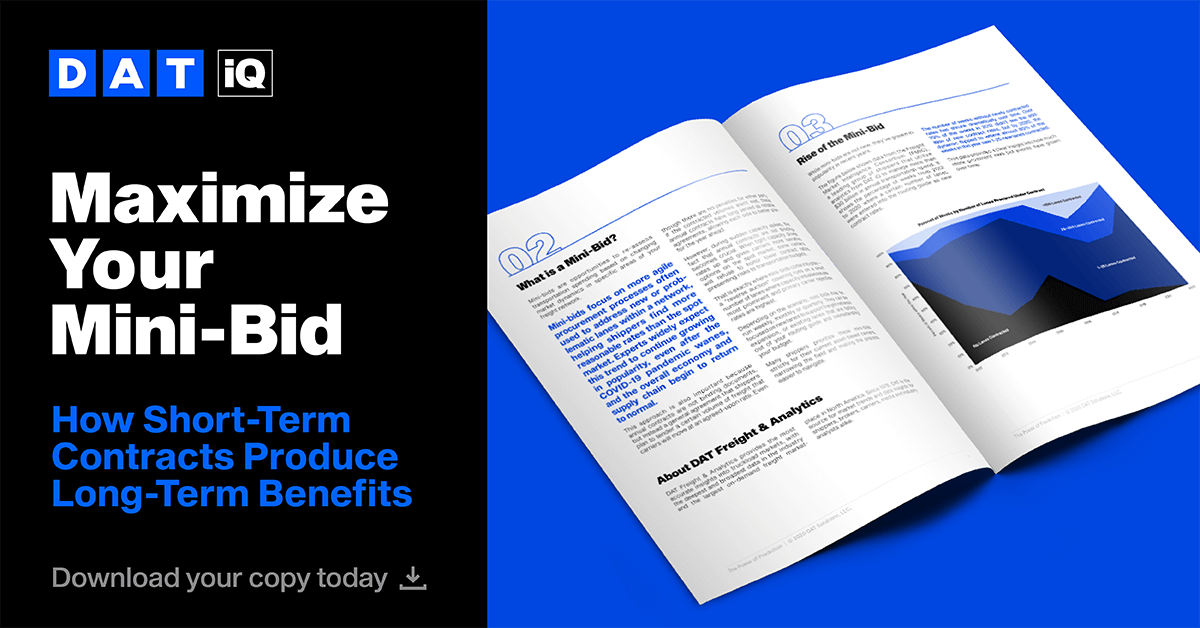Transportation mini-bids have grown in popularity in recent years. With sophisticated data analytics, these continuous procurement strategies are easier to execute than they once were, and they can add much needed flexibility to your supply chain.
For many transportation buyers, there are four trigger events for a mini-bid.
Read “Maximize Your Mini-Bid” to learn more about flexible supply chain solutions.
1. Network expansion
Whether you’re introducing a new product that requires new inbound lanes or adding new regional markets that require new outbound lanes, expanding your network requires contract rates for new lanes that weren’t in scope at the time of your annual procurement cycle.
2. Distressed, failing carriers
When markets become volatile, some carriers may fail to meet expected service levels. When volatility continues for an extended period, some carriers may close operations. In either scenario, you need new options for the lanes those carriers serviced, and targeted mini-bid events are a way to get back on track. It’s also a way to test new service providers.
3. Tight capacity
When capacity is tight and spot rates exceed contract rates, carriers may turn down shipments or ask for higher rates. In some cases, a carrier could be seeking these rates for a short period as a way to reposition equipment to a different region. In these scenarios, the carrier’s actions may indirectly initiate a mini-bid process that ultimately helps you strengthen your long-term relationship.
Tight market conditions that lead to routing guide failures and spot-market premiums can cause you to spend budget at an unsustainable pace. Mini-bids can help contain costs in these conditions. You can even anticipate seasonal spikes and plan a mini-bid proactively.
4. Soft markets
When capacity is plentiful, spot rates might drop well below your contract rates. A wide gap might initiate a mini-bid to lower your rates and align more closely to the market. However, you may want to honor these contract rates as a bargaining chip for future scenarios when the tables turn and the carrier is tempted to refuse contract rates.
Regardless of what triggers the event, you need the most accurate and reliable data to execute a successful mini-bid strategy. That includes up-to-date insights into daily changing truckload rates, plus the ability to benchmark your network’s performance against the overall market.
With that 360-view, your operations will have the agility and insights to respond to markets in real time, empowering your transportation teams to make clear and confident decisions.
Download your copy of the eBook “Maximize Your Mini-Bid: How Short-Term Contracts Produce Long-Term Benefits.”



